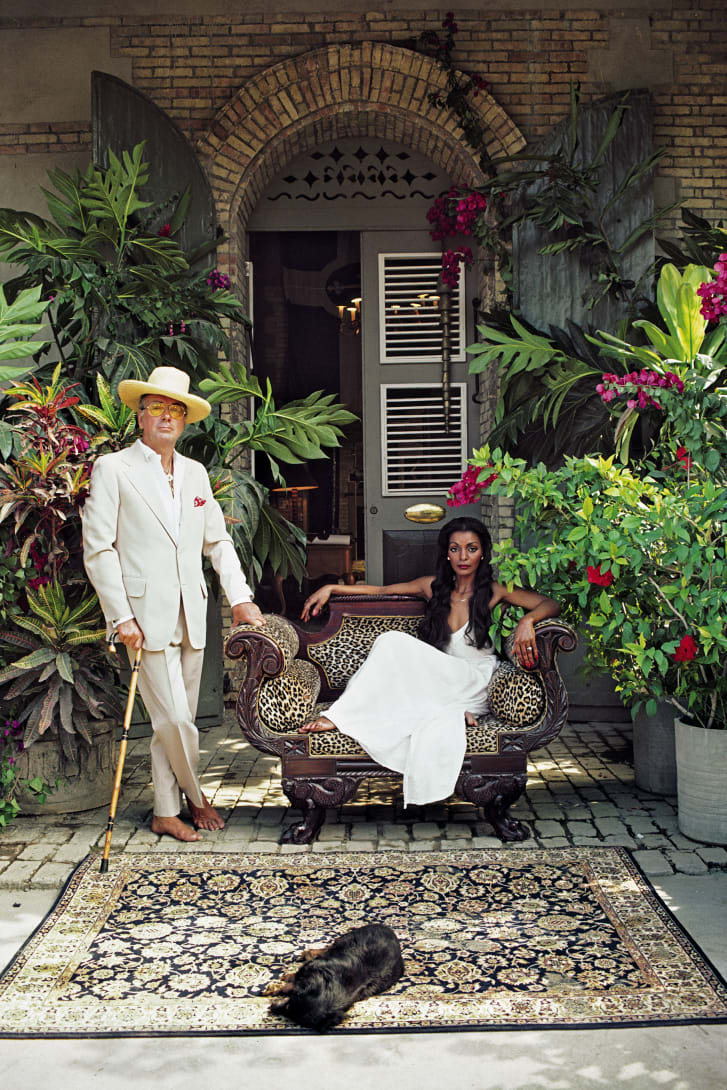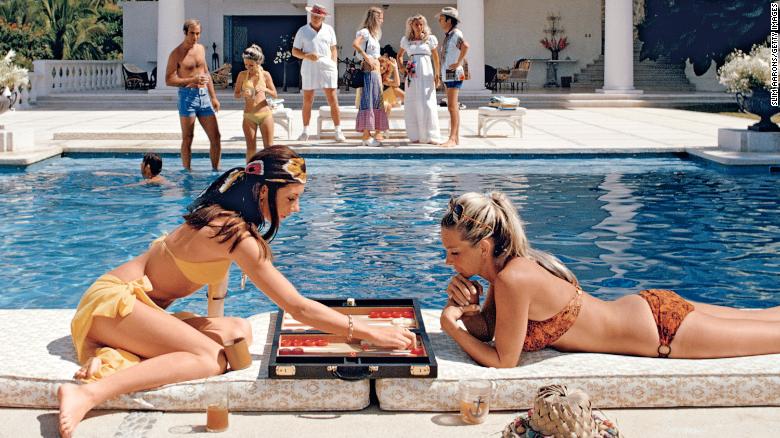lim Aarons built a career documenting the lives of the rich and beautiful. Working for publications like Town & Country, Harper’s Bazaar and Life magazine, the late photographer spent five decades taking unapologetically glamorous pictures of aristocrats and socialites. Whether lounging in Italian villas, boating off the coast of Monaco or foxhunting in the English countryside, his globetrotting subjects epitomized high society — and old money.
But according to the author of a new book on Aarons’ work, the photographer’s motive was neither to celebrate nor critique the opulence he encountered. He was driven by a journalistic curiosity about how the world’s most privileged people lived, said Shawn Waldron, who co-wrote “Slim Aarons: Style.”
“He was a reporter,” Waldron said over the phone from New York. “You have to think that so many of these pictures are created on assignment. He was sent somewhere to record what was happening at that particular place.”
The photo agency Getty Images acquired Aarons’ entire archive in 1997, several years after his retirement. Waldron, who also works as a Getty curator, said that only 6,000 of the approximately 750,000 images have been digitized so far.
At the time of the purchase, Aarons was “sort of forgotten about” and “a little bit out of favor,” Waldron added. But now, some 15 years after his death, experts and audiences are revisiting and reinterpreting the photographer’s vast body of work. With social media giving today’s jet-setters close control over how their private lives are depicted, his oeuvre offers a refreshingly candid glimpse into a past era.
And while Aarons moved with ease through the society’s most exclusive circles, he retained his objectivity and remained “very grounded,” Waldron said.
“He obviously became close to some of these people,” he added. “He photographed subjects as they came up through society and then photographed their children decades later. These are long-term relationships… but he was also very (much) of a fly on the wall and always kept that professional distance. “He was constantly going from place to place, but he always came home to his little farmhouse in Westchester County, New York.”

Olivier Coquelin, who opened the first American discotheque, and his wife, the Hawaiian singer and actress Lahaina Kameha. Credit: Slim Aarons/Getty Images
Style, not fashion
Aarons may have spent half a century surrounded by affluence, but his fixation on glamour may have been rooted in experiences of poverty and war. Though the photographer always claimed to be an orphan from New Hampshire, a documentary produced after his death revealed that he hailed from an immigrant Jewish family in New York City’s Lower East Side. With an absent father and his mother in a psychiatric hospital, Aarons was “passed between family members,” Waldron said.






